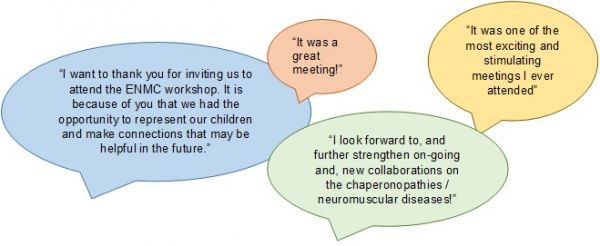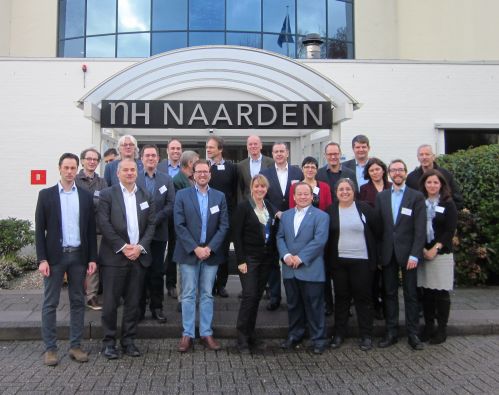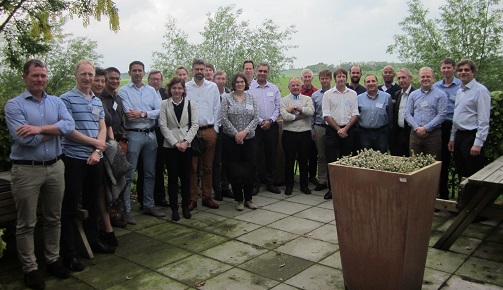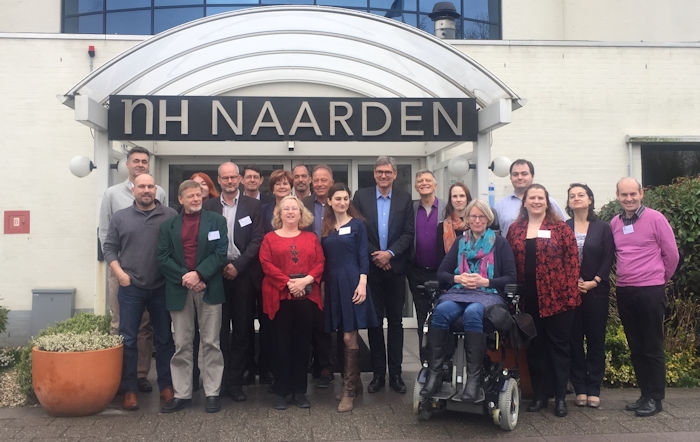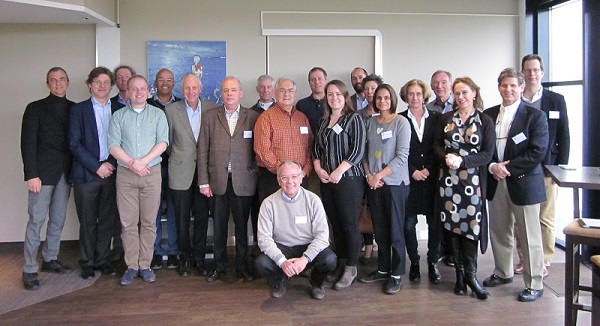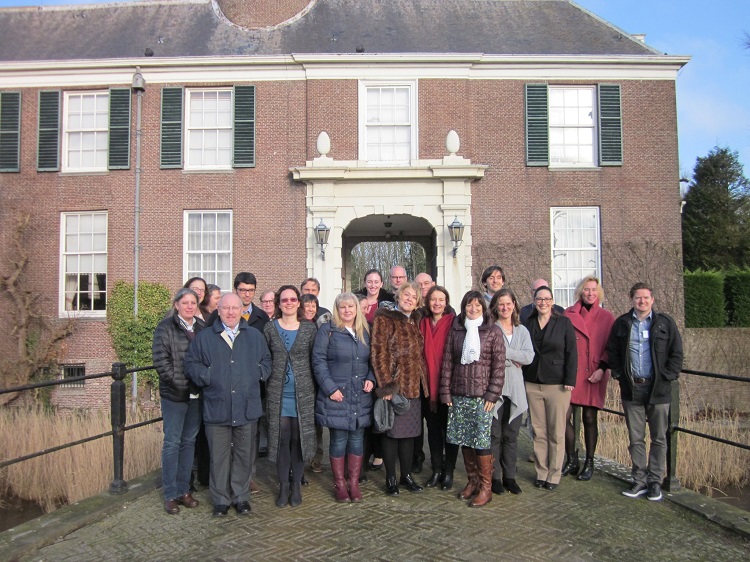Location: Heemserk
Now also available in the following translations:
French
Spanish
Catalan
Danish
Hebrew
Dutch
Italian
Finnish
German
232nd ENMC International Workshop: Recommendations for Diagnosis and Nucleoside Treatments of Mitochondrial DNA Maintenance Disorders
Organisers:
Ramon Martí (Barcelona, Catalonia, Spain) and Michio Hirano (New York, NY, U.S.A.)
Description:
During the weekend of the 16th through 18th June 2017, fifteen clinicians, basic scientists, patient relatives, and pharmaceutical representatives met in Heemskerk, The Netherlands. The delegates work in four ENMC member countries, one associated member country, and four non-member countries. The meeting was the third ENMC workshop devoted to disorders of mitochondrial DNA (mtDNA) maintenance. The two prior workshops dedicated to this topic were held in September 2007, workshop 155, “Polymerase gamma and disorders of mitochondrial DNA synthesis, and December 2008, workshop 163, “Mitochondrial DNA disorders”.
Background and Aims of the Workshop
Tiny structures called mitochondria, present in almost all human cells, produce energy that drives chemical reactions in the cells and hence regular cell functioning. For this reason, they are sometimes called the ‘powerhouses’ of the cell. Mitochondria contain their own “gene material” (DNA), which is called “mitochondrial DNA” abbreviated as mtDNA. This mtDNA is essential for the normal functioning of mitochondria. An important group of mitochondrial diseases, called “mtDNA maintenance disorders”, is caused by changes (“mutations”) in genes that encode proteins needed to replicate and maintain mtDNA, which results in mtDNA damage. Because many important proteins and other elements required for the correct mitochondrial function are manufactured based upon blueprints contained in mtDNA, the defective maintenance of this molecule results in mitochondrial dysfunction associated with many clinical problems that severely affect patients. Depending on the particular affected gene and other factors, different symptoms appear. In some cases, the disease mainly affects the muscle function, which may lead to respiratory failure and death in infancy or childhood. Other clinical presentations include severe dysfunction of the liver, gastrointestinal tract, or the central nervous system, which are also often fatal at early ages.
This workshop aimed to improve the clinical recognition, diagnosis, and treatment of these patients with focused discussion on treatments for two diseases: thymidine kinase 2 (TK2) deficiency and mitochondrial neurogastrointestinal encephalomyopathy (MNGIE).
Aims of the Workshop
(i) To present and discuss the latest updates and the state of the art in the diagnosis and treatment of mtDNA maintenance diseases, including the compilation of new genes, new findings on why and how these dysfunctional genes and related proteins lead to the associated severe symptoms, as well as preclinical and clinical evidence on the plausibility of new treatments.
(ii) To develop consensus management guidelines for treating TK2 deficiency and other mtDNA maintenance diseases.
(iii) To develop a strategy to recruit patients for an international clinical trial to treat patients with TK2 deficiency, since the workshop included neurologists, paediatric neurologists, and representatives of patients’ groups.
Outcomes of the Workshop
The workshop began with presentations on the basic biology of mtDNA replication (Drs. Copeland, Rampazzo, and Wang) and on human diseases caused by impaired mtDNA maintenance (Drs. Rahman and Martí). This background session was followed by discussions of the major symptoms and signs, biochemical and genetic alterations, their evolution from pre-symptomatic to end-stage clinical appearance, approaches to quick and correct diagnosis of these disorders, and identification of clinical outcomes to use as objective indicators of efficacy and improvement of treatments for clinical trials (Drs. Lombès, Garone and Saada). Because animal models of the disorders are critical tools for understanding how mutations cause diseases and for testing therapies, investigators described their experiences with several mutant mice and zebrafish models (Drs. Hirano, Karlsson, Suomalainen, Spinazzola, and Horvath). Interestingly, several scientific studies of the mouse and cellular models have revealed the importance of balanced pools of the four deoxynucleoside triphosphates needed for mtDNA synthesis: dATP, dGTP, dCTP and dTTP. These four molecules, collectively known as “dNTPs”, are the building blocks for the maintenance of mtDNA. Some of these diseases affect genes and proteins involved in dNTP synthesis. For example, the protein thymidine kinase (TK2) is needed for the synthesis of dTTP and dCTP within mitochondria, and the protein deoxyguanosine kinase (dGK) is needed for the synthesis of dATP and dGTP in mitochondria as well. There is accumulated evidence of the potential therapeutic benefits of administration of deoxynucleoside and deoxynucleotides, which are precursors or intermediate molecules needed for dNTP synthesis. The administration of these substances to cells (in vitro) or animal models (in vivo) bypasses the dysfunction of TK2 and dGK and may restore dNTP balance.
Additional studies in in vivo models are required to clarify whether the treatment is also potentially translatable to other mtDNA maintenance diseases (Drs. Horvath, López, Cámara and Saada). Based on these laboratory studies, TK2-deficient patients in Europe and North, Central, and South America have been treated with deoxynucleoside and deoxynucleotide therapies under compassionate use protocols with striking and encouraging results (Drs Hirano and Paradas and Mr. Arturo Estopiñán and Mr. Lander Nogués). To obtain full regulatory approvals from the Food and Drug Administration (FDA) and European Medicines Agency (EMA) to use deoxynucleosides to treat TK2 deficiency, a clinical trial must support the efficacy of the product. Towards this goal, clinicians, industry representatives, and a biostatistician/clinical trial expert reported the multiple steps and potential pitfalls involved in moving novel drugs into clinical trials (Peter Barber, Curtis Cui, John Thompson). In contrast to TK2 deficiency, MNGIE has several available therapies (Drs. Hirano, Carelli, Martí, and De Coo). Guidelines for the MNGIE therapies were generated.
How this will Benefit Patients
A major focus of this workshop was on planning for continued testing of deoxynucleoside therapy for TK2 deficiency. If this further confirms the benefit of this promising therapy, regulatory approval will lead to greater availability of the first specific and effective treatment for this disease.
Other topics intended to benefit patients included: 1) more rapid diagnosis of TK2 deficiency; 2) clearer guidelines to help physicians choose the most appropriate option among the multiple innovative therapies for MNGIE; and 3) potential new future clinical trials of deoxynucleoside therapy for other mtDNA maintenance disorders.
List of Participants
Ramon Martí, PhD, Vall d’Hebron Research Institute and CIBERER, Barcelona, Spain
Michio Hirano, MD, Columbia University Medical Center, New York, USA
Peter H. Barber, Meves Pharmaceutical, Inc., New York, USA
Yolanda Cámara, PhD, Vall d’Hebron Research Institute and CIBERER, Barcelona, Spain
Valerio Carelli, MD, PhD, University of Bologna, Italy
René de Coo, MD, PhD, Neuromuscular and Mitochondrial research center (NeMo), Rotterdam, The Netherlands
William C. Copeland, PhD, National Institute of Environmental Health Sciences, Research Triangle Park, NC, USA
Curtis Cui, Hongene Biotechology USA, Morrisville, NC, USA
Arturo Estopiñán, Baltimore, MD, USA
Caterina Garone, MD, PhD, Medical Research Council Mitochondrial Biology Unit, University of Cambridge, Cambridge, UK
Rita Horvath, MD, PhD, Newcastle University, Newcastle Upon Tyne, UK
Anna Karlsson, MD, PhD, Karolinska Institutet, Stockholm, Sweden
Juan Cruz Landoni, BSc, University of Helsinki, Finland.
Anne Lombès, MD, PhD, Inserm UMR 1016, Institut Cochin, Paris, France
Carlos López, PhD, Columbia University Medical Center, New York, USA
Lander Nogués, Donostia, Spain
Carmen Paradas, MD, PhD, University Hospital Virgen del Rocio, Seville, Spain
Shamima Rahman, FRCP, PhD, University College, London, UK
Chiara Rampazzo, PhD, Department of Biology, University of Padova, Italy
Ann Saada, PhD, Hadassah-Hebrew Medical Center, Jerusalem, Israel
Antonella Spinazzola, MD, PhD, University College London, London, UK
Anu Suomalainen Wartiovaara, MD, PhD, Research Programs Unit, Molecular Neurology, University of Helsinki, Finland.
John LP (Seamus) Thompson, PhD, Mailman School of Public Health, Columbia University, New York, USA
Liya Wang, PhD, Swedish University of Agricultural Sciences, Uppsala, Sweden
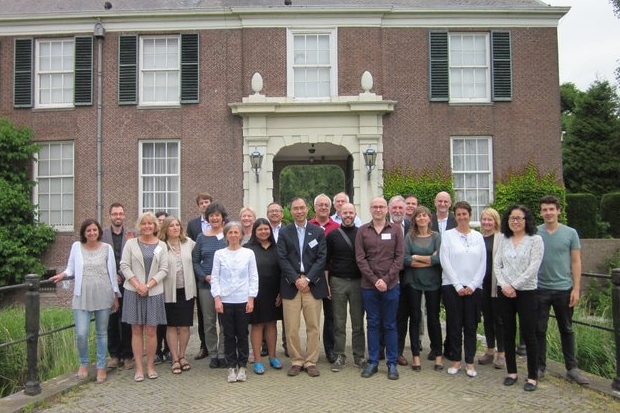
The participants of the 232nd ENMC workshop on mtDNA maintenance disorders
A full report of this ENMC workshop will be published in Neuromuscular Disorders (PDF).
This workshop was co-sponsored by MDA USA MDA_Logo.jpg


